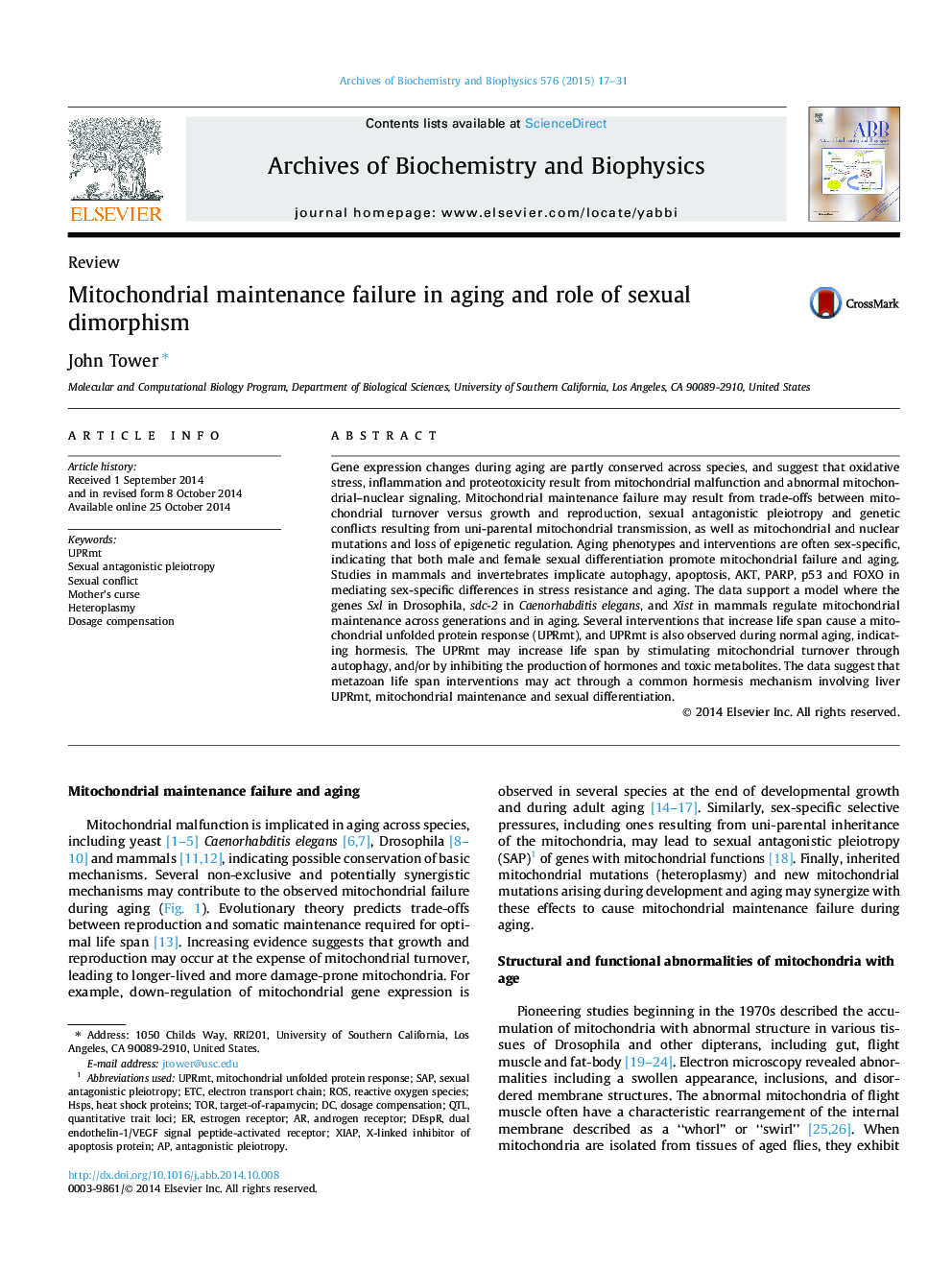| کد مقاله | کد نشریه | سال انتشار | مقاله انگلیسی | نسخه تمام متن |
|---|---|---|---|---|
| 1924927 | 1536326 | 2015 | 15 صفحه PDF | دانلود رایگان |
• Gene expression changes during aging indicate mitochondrial maintenance failure.
• Sexual differentiation may promote mitochondrial maintenance failure during aging.
• Sexual differentiation, autophagy and dosage compensation regulate stress resistance, mitochondrial maintenance and aging.
• Life span interventions in metazoans may involve hormesis and inhibition of sexual differentiation by liver UPRmt.
Gene expression changes during aging are partly conserved across species, and suggest that oxidative stress, inflammation and proteotoxicity result from mitochondrial malfunction and abnormal mitochondrial–nuclear signaling. Mitochondrial maintenance failure may result from trade-offs between mitochondrial turnover versus growth and reproduction, sexual antagonistic pleiotropy and genetic conflicts resulting from uni-parental mitochondrial transmission, as well as mitochondrial and nuclear mutations and loss of epigenetic regulation. Aging phenotypes and interventions are often sex-specific, indicating that both male and female sexual differentiation promote mitochondrial failure and aging. Studies in mammals and invertebrates implicate autophagy, apoptosis, AKT, PARP, p53 and FOXO in mediating sex-specific differences in stress resistance and aging. The data support a model where the genes Sxl in Drosophila, sdc-2 in Caenorhabditis elegans, and Xist in mammals regulate mitochondrial maintenance across generations and in aging. Several interventions that increase life span cause a mitochondrial unfolded protein response (UPRmt), and UPRmt is also observed during normal aging, indicating hormesis. The UPRmt may increase life span by stimulating mitochondrial turnover through autophagy, and/or by inhibiting the production of hormones and toxic metabolites. The data suggest that metazoan life span interventions may act through a common hormesis mechanism involving liver UPRmt, mitochondrial maintenance and sexual differentiation.
Figure optionsDownload high-quality image (87 K)Download as PowerPoint slide
Journal: Archives of Biochemistry and Biophysics - Volume 576, 15 June 2015, Pages 17–31
